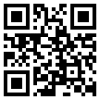Teaching Neonatal Emergency Umbilical Venous Access to Untrained Medical Staff: A Pilot Study Using Video Instruction and Real Umbilical Cords
- PMID: 40401261
- PMCID: PMC12094830
- DOI: 10.2147/AMEP.S516071
Teaching Neonatal Emergency Umbilical Venous Access to Untrained Medical Staff: A Pilot Study Using Video Instruction and Real Umbilical Cords
Abstract
Background: Establishing intravenous access in newborns in an emergency situation is a challenge even for well-trained neonatologists. As not all hospitals have a neonatology department, other specialists such as anaesthesiologists and obstetricians must also be able to quickly establishing venous access. Consequently, there is a need for teaching strategies that can be used for a large group of people.
Aim: To evaluate the applicability and the acceptance of a teaching method for umbilical venous access that can be implemented in hospitals with obstetric departments following the principles of simulation-based learning.
Methods: Single-center cross-over pilot-study with video-based teaching of medical students using a model with fresh umbilical cords. The volunteers performed three techniques: standard umbilical cord cut - umbilical button cannula (S-EUC), lateral incision - umbilical button cannula (L-EUC) and standard umbilical cord cut - umbilical catheter (S-UC). Participants' acceptance of the teaching method was evaluated using Likert-scale.
Results: The video teaching was considered as easy to learn and understand for all three techniques. After practicing on the model, most participants believed that they could successfully apply at least one of the techniques if faced with a real emergency situation. Subjects were able to perform the techniques in similar timescales to those published in the literature for the standard technique (S-UC).
Conclusion: The teaching method combining video learning and practical training on real umbilical cords, is suitable for teaching venous access in newborns even for untrained personnel. The model can be replicated using materials every obstetrics department has at hand.
Keywords: medical teaching; newborn resuscitation; simulation-based teaching; umbilical cord; umbilical vein; video teaching.
Plain language summary
This study was conducted to improve how medical staff learn to perform emergency procedures on newborns, specifically umbilical venous access. This procedure is crucial in emergencies but is rarely needed, making it hard to practice. The researchers wanted to create a teaching method that is easy to use and does not require a lot of resources. They used real umbilical cords to create a realistic training model and conducted explicit teaching videos for every technique. Medical students watched these instructional videos to learn the procedure. Students practiced the procedure using the model. The researchers found that the video teaching method was effective. Students felt prepared to handle real emergencies. One technique, called S-EUC, was the fastest and most successful. The teaching model and the video-based approach is cost-effective and can be used in hospitals with limited resources. These results mean that hospitals can adopt this teaching method to better prepare their staff for neonatal emergencies. The study suggests that using video instruction and real umbilical cords is a practical way to teach important medical skills. This approach could lead to faster and more successful emergency care for newborns.
© 2025 Brickmann et al.
Conflict of interest statement
The authors declare no conflicts of interest in this work.
Figures




References
-
- Lee AC, Cousens S, Wall SN, et al. Neonatal resuscitation and immediate newborn assessment and stimulation for the prevention of neonatal deaths: a systematic review, meta-analysis and Delphi estimation of mortality effect. BMC Public Health. 2011;11(Suppl 3):S12. doi:10.1186/1471-2458-11-S3-S12 - DOI - PMC - PubMed
-
- Association AH, Pediatrics AAo. 2005 American Heart Association (AHA) guidelines for cardiopulmonary resuscitation (CPR) and emergency cardiovascular care (ECC) of pediatric and neonatal patients: neonatal resuscitation guidelines. Pediatrics. 2006;117(5):e1029–38. doi:10.1542/peds.2006-0349 - DOI - PubMed
LinkOut - more resources
Full Text Sources
Research Materials

